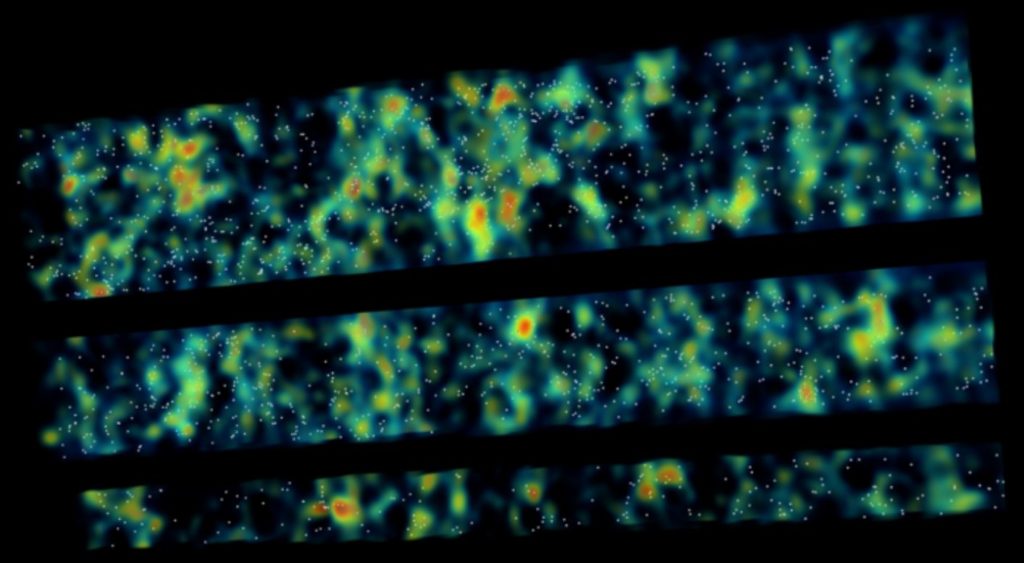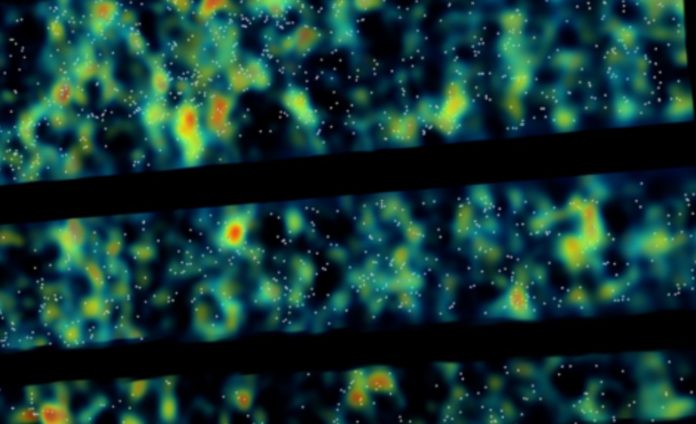Some of the largest clusters of galaxies have obscured their origins by hiding in plain sight. Andrew Newman of Carnegie Mellon University has developed a novel method for detecting the antecedents of the most extreme galactic conditions. The findings of the researchers were reported in Nature.
Galaxies, like everyone else, are moulded and sculpted by their surroundings. It’s critical to track the emergence of features produced by environmental factors as they arise to have a thorough picture of the many physical impacts on a galaxy’s lifecycle.
“We’ve known for a long time that the colors, masses, and shapes of galaxies depend on their cosmic environment,” Newman said, “but there’s a lot we don’t know about when and how those differences appeared.”

Galaxy clusters are the biggest structures in the universe. They are held together by their own gravity and can have thousands of galaxies in them. Protoclusters, the forerunners of these vast galactic settings, are among the earliest known structures in the universe and are ideal for investigating the early phases of a galaxy’s lifespan.
At the time of the Big Bang, the universe was a hot, murky soup of expanding particles. Some parts of the cosmos were denser than others, and their gravity finally overpowered the expansion of the universe, causing material to collapse inward and form clumps of structure that would eventually give rise to groupings or clusters of galaxies.
However, the researchers discovered that these protoclusters are extremely difficult to locate.
Most protoclusters have been found so far by looking for places in the sky where there are an unusually large number of faraway galaxies. Carnegie’s Gwen Rudie, Guillermo Blanc, Mahdi Qezlou, Daniel Kelson, Alan Dressler, and Observatories Director John Mulchaey implemented a new technique for locating protoclusters.
The key to their research is that the protocluster’s cosmic hydrogen gas absorbs light flowing through it, producing a shadow on galaxies beyond the protocluster’s borders. By observing these shadows with the Magellan telescopes at Carnegie’s Las Campanas Observatory in Chile, the team was able to determine the probable locations of protoclusters.
“We were very surprised to find so few galaxies inside the protoclusters that cast the strongest shadows,” Newman said, “which is why these protoclusters were missed by earlier searches.”
Their findings suggest that the unseen galaxies in the ignored protoclusters have evolved differently, making them dimmer and thus harder to detect. The team intends to perform more searches in order to find these lost galaxies and learn more about their strange qualities.
“It’s interesting that the evolutionary paths of these galaxies diverged so early in the history of the universe, long before the clusters they now live in were assembled,” Blanc added.
“One of the key lessons from this work is that as we map the distant universe, it’s important to bring together multiple perspectives; using just one technique can give a misleading picture,” Rudie added.
Future protocluster searches, according to the researchers, will be able to evaluate their findings against a broader population.
Image Credit: Getty
You were reading: Astronomers Spot A Hidden Population Of Ultraviolet-dim Protoclusters
